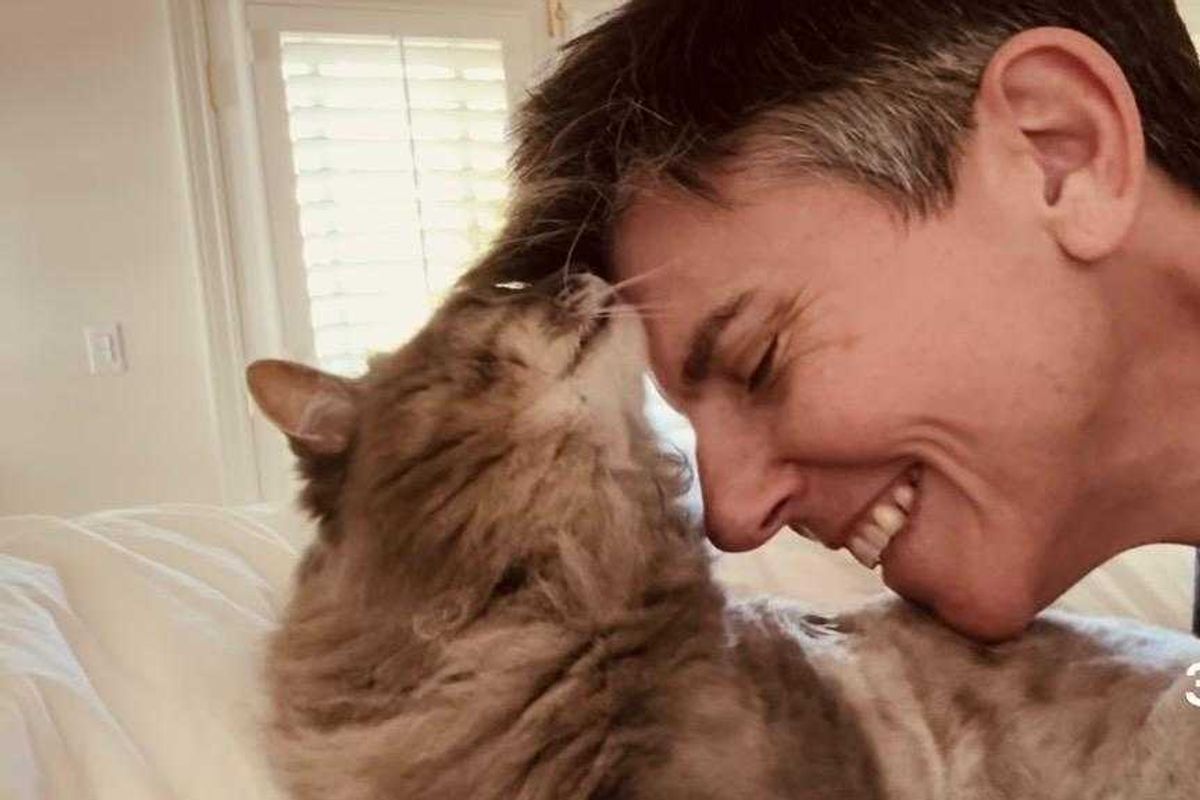Amanda Nguyen, the rape survivor who rewrote sexual assault laws, shares her story on TikTok
So incredibly powerful.

Amanda Nguyen changed the world for sexual assault survivors.
In 2013, while in her final semester at Harvard University, Amanda Nguyen was raped on campus. Like far too many sexual assault survivors, she found herself wrapped up in a criminal justice system that was traumatizing, expensive, difficult to navigate and often ineffectual.
The following year, she founded Rise, an organization advocating for the rights of survivors of sexual violence. She helped rewrite state and federal laws surrounding how sexual assault is handled and played an integral role in getting the Survivors’ Bill of Rights Act of 2016 passed unanimously in Congress. That act, which was signed into law by President Obama in 2016, changed the way rape kits are processed and created a bill of rights for survivors of sexual assault and rape.
But Nguyen didn't stop there. After the successful passage of the Sexual Assault Survivors' Rights Act, Nguyen received more than a million messages from survivors around the world fighting for their own rights and protections. She knew she needed to take her cause even wider, advocating for survivors everywhere.
Nguyen knew from personal experience the impact of having face time with decision-makers. When she was trying to get a survivor rights bill passed in Massachusetts, she almost gave up when she was told there was a slim chance of the bill passing. But she got on a plane and met with lawmakers personally, which swayed them to support the bill.
"There's nothing more powerful than hearing it straight from the people it has affected," Nguyen told TIME. "We pushed the boundaries from a 0 percent chance to a 100 percent chance in 14 hours."
Nguyen took that same energy to the highest international body, the United Nations. This summer, Rise set up a powerful exhibition, "What Were You Wearing?", at the UN Headquarters in New York to highlight the problem of victim-blaming that so often follows sexual violence. For six years, Nguyen and Rise have been working toward an international resolution supporting the rights of sexual violence survivors. Finally this month, the United Nations unanimously passed a resolution providing access to justice for victims of sexual assault.
The vote was welcomed by exclamations of joy and relief from audience members. One of those cries came, understandably, from Nguyen herself.
Nguyen shared a powerful video synopsis of her story on TikTok, which has been viewed more than 18 million times. Watch:
@amandangocnguyen My story
What Amanda Nguyen has accomplished is incredible and will make a difference in millions of lives around the world. The tragedy is in how she got to where she is now—both her own experience and the countless stories that have propelled her to work tirelessly for survivor rights.
"I wanted to be an astronaut, I didn't want to be an activist," Nguyen told Euronews. "But here I am."
Nguyen's accomplishments go far beyond the activism highlighted in her TikTok, however. Her bio on her website is a testament to what she is capable of and an inspiration for anyone who has survived sexual assault:
Amanda Nguyen is the founder of Rise, a 2019 Nobel Peace Prize Nominee, and a 2022 TIME Woman of the Year. Amanda’s 2021 viral video ignited a wave of collective action in the anti-Asian hate movement. She made history by drafting and unanimously passing both the Sexual Assault Survivors’ Bill of Rights through the United States Congress and the Survivors' Resolution through the United Nations General Assembly. Amanda’s directorial debut, Everything I Ever Wanted To Tell My Daughter About Men, won Best Feature at the 2022 Cannes Independent Film Festival. She is the lead of Emmy-nominated mini documentary "Rise Above" by Money Magazine. She served the White House, Department of State, and NASA, and is currently an Astronaut-Scientist Candidate at the Astronautical Science Institute. Amanda graduated from Harvard University. For her work, Amanda has been named a Heinz Laureate, Forbes 30 Under 30, Foreign Policy 100, Fedrick Douglass 100, TIME 100 Next, BBC 100, Marie Claire Woman of the Year. She loves bunnies and dogs.
- The gymnasts who heroically confronted Larry Nassar over sexual ... ›
- 'I felt ill': Brendan Fraser describes sexual assault that nearly made ... ›
- Why do sexual assault survivors feel shame? A cartoon sums it up ... ›
- Why don't women come forward after sexual assault? This comment nailed it. - Upworthy ›
- Woman shuts the myth that rape is a woman's fault with dog - Upworthy ›
- Women choose being alone with bear instead of man in interview - Upworthy ›
- Rape kit backlogs finally clear, giving some survivors hope - Upworthy ›



 Meatloaf was a staple dinner.
Meatloaf was a staple dinner. Spaghetti is still a classic.
Spaghetti is still a classic. Why were pork chops so popular?
Why were pork chops so popular?


 First Lady Jacqueline Kennedy greets guests before a reception for the Wives of American Society of Newspaper Editors Members.via
First Lady Jacqueline Kennedy greets guests before a reception for the Wives of American Society of Newspaper Editors Members.via  A gorilla walking on its knuckles. via
A gorilla walking on its knuckles. via 
 Cooking at home is almost always cheaper than eating out, and often significantly so.
Cooking at home is almost always cheaper than eating out, and often significantly so. Bulk spices often cost a fraction of what they cost in jars.
Bulk spices often cost a fraction of what they cost in jars. Growing your own food can save you money.
Growing your own food can save you money. Biking is free.
Biking is free. Public libraries are treasure troves of free items to borrow.
Public libraries are treasure troves of free items to borrow.